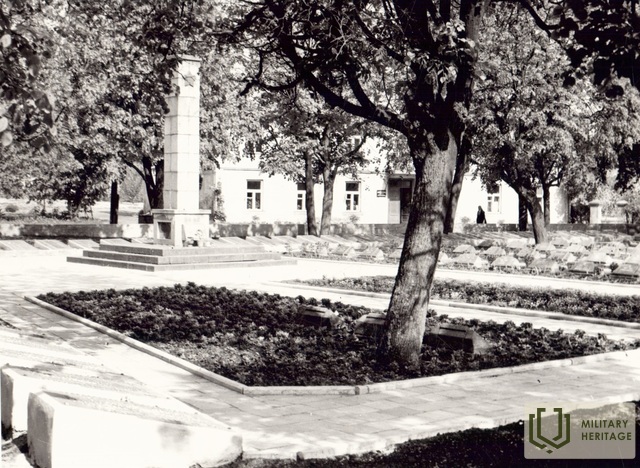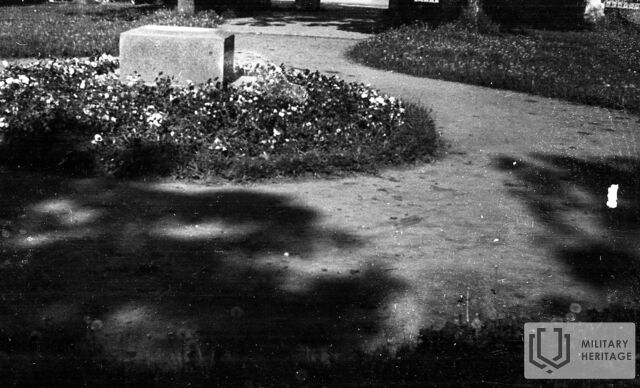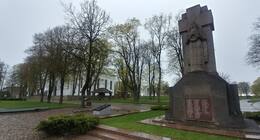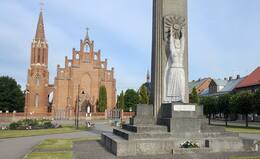Monuments to the Independence of Lithuania. Histories of Monuments Created by Roberts Antinis: (II) Soviet Period
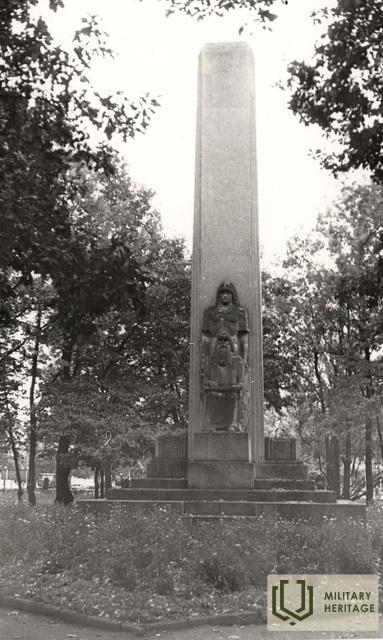
Most of the monuments to Independence (related to Lithuanian statehood and the struggles for it) erected between the wars were destroyed during the Soviet era as ideologically dangerous or inappropriate. The occupiers destroyed not only people, but also memory and signs of memory. The monuments created by sculptor Roberts Antinis also suffered a similar fate.
Independence, Freedom, Statehood – the Soviets considered these categories and everything that was somehow connected with them a threat to their own empire and regime. They tried desperately to erase them, whether it was people's thoughts and memories, or material witnesses and signs. For this, they killed, imprisoned and exiled, bombed and destroyed, used propaganda and censorship. The Soviet occupiers were also helped here by local minions.
This fate befell the majority of monuments related to Lithuanian statehood and the struggles for it built during the interwar period (1918–1940). These monuments were usually built on the initiative and with the funds of local people, and such efforts “from below” spoke of natural and ingrained patriotism. They sprouted in cities, towns, and sometimes even villages, becoming the accents of their urban design and various celebrations and ceremonies. During the two decades of Independence, Lithuania was covered with a fairly dense network of such memorial signs. Let us trace what happened to the Independence monuments created by sculptor Roberts Antinis (senior) during the years of Soviet occupation, recalling that his works adorned the squares of at least three Lithuanian cities – Biržai, Rokiškis and Širvintos. ( link to the first part of the topic ).
Biržai. In 1944, the city's Independence Square, where the monument to those who died for Lithuania's Independence stood, began to bury Soviet Union soldiers. The space was turned into a cemetery for Soviet soldiers of World War II. It is understandable that the neighborhood of the Independence Monument, dedicated to those who fought against the Red Army (Bolsheviks) in 1919, and the graves of Red Army soldiers did not fit together and could not last long. In the spring of 1946, the monument was blown up by order of the local authorities. The remains of the monument were buried right there. Only the pedestal on which the monument to the Soviet army was erected remained.
Širvintos. In 1952, the Širvintos Komsomol Committee appealed to the Širvintos Executive Committee, requesting permission to demolish the “barley nationalist monument”. Between 1952 and 1955, the monument was destroyed. The Širvintos residents say that the sculpture was surrounded by a chain and demolished with a tractor. The remains of the monument were broken into smaller pieces and buried in several places.
Rokiškis. This is one of those rare cases when the monument dedicated to Independence built during the interwar period was not destroyed. Only in the 70s, by order of the government, the date “1918–1928” and the swastika symbol on the monument were plastered over. In 1971, by the resolution of the Collegium of the Ministry of Culture of the Lithuanian SSR, this monument, together with other 3,553 works of art, was declared a monument of art of local significance of the Lithuanian SSR (DV 2362). In the list of cultural monuments, it is described as a “monument-obelisk” created by Roberts Antinis in 1929–1931.
Kretinga. It is doubtful whether the monument called "Freedom" was created by Antinius, but we will mention its fate. The monument stood in the city's Public Square. The public and representative space also suited the Soviets, and in 1944–1945 Soviet soldiers who died during World War II were buried here (the remains were later exhumed). In 1948, the "Freedom" monument was toppled and sunk in the Akmena River. Only the monument's pedestal remained, but even this was cut down and used for tombstones during the city square's renovation in the 1980s.
- Juozas Banionis, “Biržai, Vytautas St. Monument to Those Who Died for Lithuanian Freedom”, in: Monuments of the Victims, Vilnius: Mokslo ir encyclopaedidės publishing house, 1994, p. 19.
- Julius Kanarskas, “Kretinga, Town Hall Square. Freedom Monument”, in: Victims of Monuments, Vilnius: Science and Encyclopedia Publishing House, 1994, p. 87.
- Jolanta Klietkutė, “Monument to the Decade of Lithuanian Independence (1928–1928) in Kretinga (Freedom Monument)”, in: Kretingos krašto enciklopedija, 2014 (updated 2020-01-11), available online: https://www.kretingosenciklopedija.lt/kultura/kulturos-paveldas/istorinis-paveldas/paminklai/paminklas-lietuvos-nepriklausomybes-desimtmeciui-1928-1928-pamineti-kretingoje-laisves-paminklas/ .
- Girdas Paliulis, Eugenijus Žitlinskas, "Širvintos, Vilniaus g. Lithuanian soldiers' monument", in: Victims' monuments, Vilnius: Mokslo ir encyclopaedidės publishing house, 1994, p. 174.
- Aldona Pivoriūnienė, “Rokiškis, the Century of Independence. Monument of the Decade of Independence”, in: Victims of Monuments, Vilnius: Science and Encyclopedia Publishing House, 1994, p. 153.
Related objects
Independence Square in Biržai
In the center of Biržai city.
A place of remembrance of the battles for freedom and a witness to the memory wars.
In 1931, on the former square next to the Church of St. John the Baptist, a monument to those who died for the Independence of Lithuania was erected at the initiative of the local team of the Lithuanian Riflemen's Union. The square became known as Independence Square, and the people of Biržai called the monument itself "Birute" (in honor of the Grand Duchess of Lithuania). The square became a place for various celebrations and commemorations. Flowers were laid at the monument, and riflemen or scouts' oaths were taken. After the Soviets occupied Lithuania, the monument did not last long - in 1946 it was blown up and buried where it stood. A cemetery for Soviet soldiers was established on the site of the Independence Monument.
In 1988, the people of Biržai excavated the remains of the destroyed monument. And in 1990, an exact copy of this monument was restored, only it was no longer erected in its original place, but further away, next to the cemetery of Soviet soldiers. In 2006–2007, the monument was restored, and a plaque with the names of 60 Lithuanian volunteers, soldiers, partisans and riflemen who died was attached to its pedestal. In 2017, another memorial plaque was unveiled next to the monument - to the knights and volunteers of the Vytis Cross of the Biržai parish in the 1919–1920 Independence battles.
In 2011, original fragments of the original monument were brought and exhibited next to the church.
In 2005–2010, the square was reconstructed. It is believed that in the 16th–17th centuries, this place was supposed to be an empty field between the castle's defensive moat and the townspeople's plots. Later, the area was divided into plots. When reconstructing the square, it was intended to reflect these stories: narrow, diagonal marks resembling cannonball trajectories semantically connect the square with the castle, and the wider lanes crossing the square more or less correspond to the boundaries of the townspeople's plots that were here in later times.
In 2021, the square was officially renamed Independence Square. The square remains the burial place of Soviet soldiers from World War II, marked by an obelisk and memorial plaques. It is believed that soldiers and spies from the NKVD-MVD-MGB units who died in battles with partisans in the Biržai region in 1945–1954 were also buried here.
Independence Square in Rokiškis
In the center of Rokiškis city.
The highlight of Independence Square is the monument erected in 1929–1931 to commemorate the 10th anniversary of Independence. The monument depicts a Lithuanian soldier and a Lithuanian woman holding a sun with a swastika depicted on a shield in her raised hands. This is one of those rare cases when a monument erected in Independent Lithuania during the Soviet era was not destroyed. Only in 1970 was the inscription “1918–1928” and the swastika plastered over. In 1989, the monument was restored.
Since the monument was erected in 1931, the square has been known as Independence Square.
A memorial plaque with the inscription “In this square, in the post-war years (1944–1953), the bodies of the fighters killed for the freedom of Lithuania were desecrated” commemorates one of the most painful stages in the history of this square. At least three buildings surrounding the square housed Soviet repressive structures that imprisoned, interrogated and tortured Lithuanian people in 1944–1953 (Nepriklausimobės a. 5, 10, 15). These buildings are marked with commemorative plaques.




